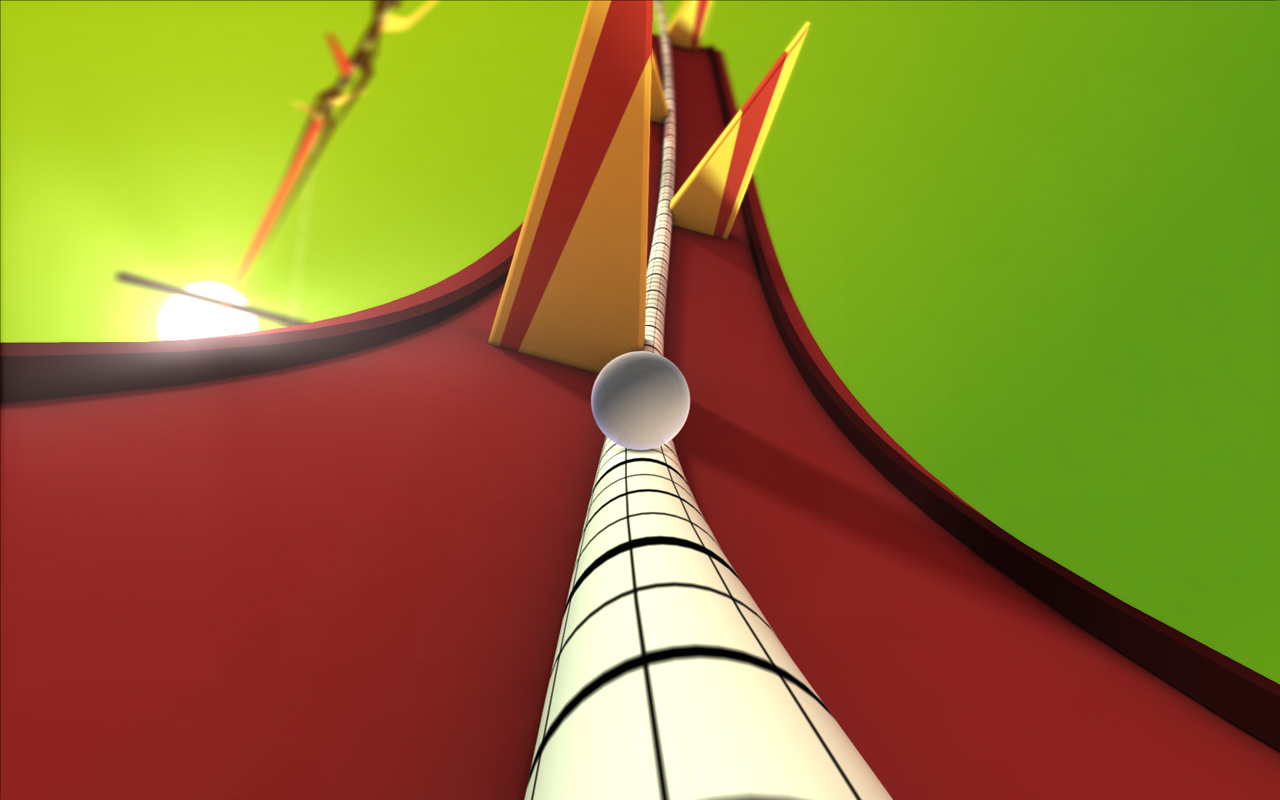

The contemplation of video games as an art form rears its head every so often in gaming journalism. Comparisons are drawn to works of art in traditional media, and everyone takes a moment to reflect on the meaning of art in general. Recent years have seen the influx of “art” games, designed with the purpose of being artistically thought-provoking, that utilize unique visuals, sounds or game mechanics. Artists often desire to distinguish themselves and deliver their own unique perspective and style; game developers are no exception. Yet Joost van Dongen’s Proun is a rare example of a game that explicitly pays homage to traditional artistic media and combines these influences with clever gameplay and a great soundtrack.
The game is named after a series of paintings in a style developed by El Lissitzky that examines the juxtaposition of necessarily two-dimensional depictions of three-dimensional concepts. Among the other influences Van Dongen lists in the credits, the Prounen, as Lissitzky’s series is called, feature distinct uses of shapes and planes to define 3D surfaces, disorienting one’s sense of space. Fittingly, the game takes place in an abstract landscape of geometric shapes and bright colors. Despite the heady inspiration, Proun is simply a racing game where you control a white sphere rolling along a cylindrical track and try to beat other colored spheres to the finish line. At the same time, it is unlike any racing game I’ve ever played, as you do not really make turns or dodge other racers. Instead, you rotate along the track to avoid obstacles. The game never really increases in complexity, but more difficult, faster settings demand greater levels of mastery. At the most difficult “faster-than-light” setting, you have no time to think, relying entirely on reflex and rhythm to avoid obstacles.
These obstacles include all manner of brightly colored, crisply rendered rectangles, spheres, cubes, doorways and other manners of shapes in both 2D and 3D, often arranged in hypnotic spirals or wobbling corridors of color. If my descriptions seem vague or abstract, it’s because the entire modern-art-inspired level design defies a lot of conventional description. There are no parallels to real-world settings. Speeding past the shifting shapes is delightfully disorienting, especially once you abandon the notion of up and down and any attempt to reorient yourself. As you rotate, the camera spirals along with you, sending the entire world spinning as you dodge obstacles. It takes some time to acclimate to the rhythm of each track, as certain shapes won’t appear to be obstructing your path until it is too late. Once you have mastered this rhythm, however, there’s a thrilling sense of dance-like motion as you dodge obstacles by a hairs-width. The game’s jazz-inspired high-energy soundtrack contributes heavily to this sense of rhythm and intensity that permeates each track. Made up of guitars, piano, drums, sax and other instruments, each tune stays in your head long after you’ve stopped playing. I often found myself playing just to hear the music, with a smile on my face each time. My only complaint is that there isn’t enough music.
Unfortunately, that criticism extends to the entire game. I’ve enjoyed every second of it, from the catchy soundtrack and slow mastering each track to trying to top the leaderboards. Van Dongen found the right blend of visuals, sound and gameplay to leave me wanting more — except there’s simply not enough for me. The game features three campaign tracks, called “compositions,” as well as two “improvisation” tracks (there appears to be no conceptual distinction between the two kinds of tracks, unfortunately). Furthermore, there are only four music tracks. There is local multiplayer, where you can race with up to three friends, but at the end of the day, the game consists of racing on one of five total tracks. Even with the addition of user-made tracks available on the Internet, I’m still left wanting.
That is not to say it has not been worth my money. While I want more, I’m impressed with what Proun has to offer. The visuals are abstract but enticing and attractive, the soundtrack is addicting and the gameplay is approachable but difficult to master. In addition to the user-made tracks, which vary in quality but more or less match the standard of those included in the game, there is a fairly robust level editor that allows you to make your own tracks. Furthermore, you can pay what you want for Proun, which really minimizes the cost for those with limited funds, or those who approach games with a healthy dose of skepticism. Finally, if nothing else, Proun is very different, and likely to surprise you.
You can download Proun for PC at proun-game.com.